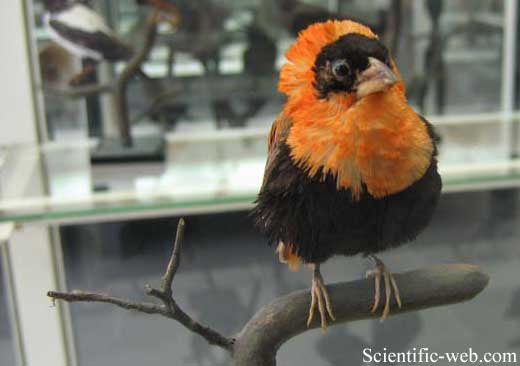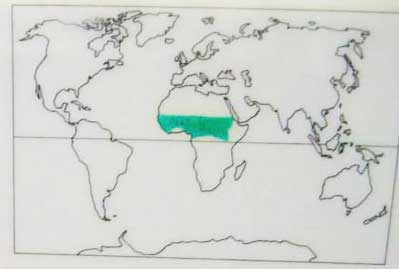Euplectes franciscanus, Photo: Michael Lahanas Cladus: Eukaryota
Name Euplectes franciscanus (Isert, 1789) Reference Schriften der Gesellschaft naturf. Freunde zu Berlin 9 p.332 pl.9 cdP Vernacular names The Northern Red Bishop or Orange Bishop (Euplectes franciscanus) is a resident breeding bird species in Africa south of the Sahara Desert and north of the Equator. It has been introduced to Puerto Rico, Martinique and Guadeloupe in the West Indies. It was formerly regarded as a subspecies of the Southern Red Bishop (Euplectes orix) of the southern half of Africa. The two are now usually classified as separate species. This common weaver occurs in a range of open country, especially tall grassland and often near water. It builds a spherical woven nest in tall grass. 2-4 eggs are laid. The Northern Red Bishop is a stocky 13–15 cm. bird. The breeding male is scarlet apart from his black head and waistcoat, and brown wings and tail. The conical bill is thick and black. He displays prominently, singing high-pitched squeaks from tall grass, puffing out his feathers or performing a slow hovering display flight. The non-breeding male is pale yellow streaked above and shading to whitish below. It has a buff supercilium. Females are similar, but smaller. Young birds have wider pale fringes on their flight feathers. The Northern Red Bishop is a gregarious species which feeds on seed, grain and some insects, all the time making a thin tsip call. References * BirdLife International (2004). Euplectes orix. 2006. IUCN Red List of Threatened Species. IUCN 2006. www.iucnredlist.org. Retrieved on 12 May 2006. Database entry includes justification for why this species is of least concern Source: Wikipedia, Wikispecies: All text is available under the terms of the GNU Free Documentation License |
|


